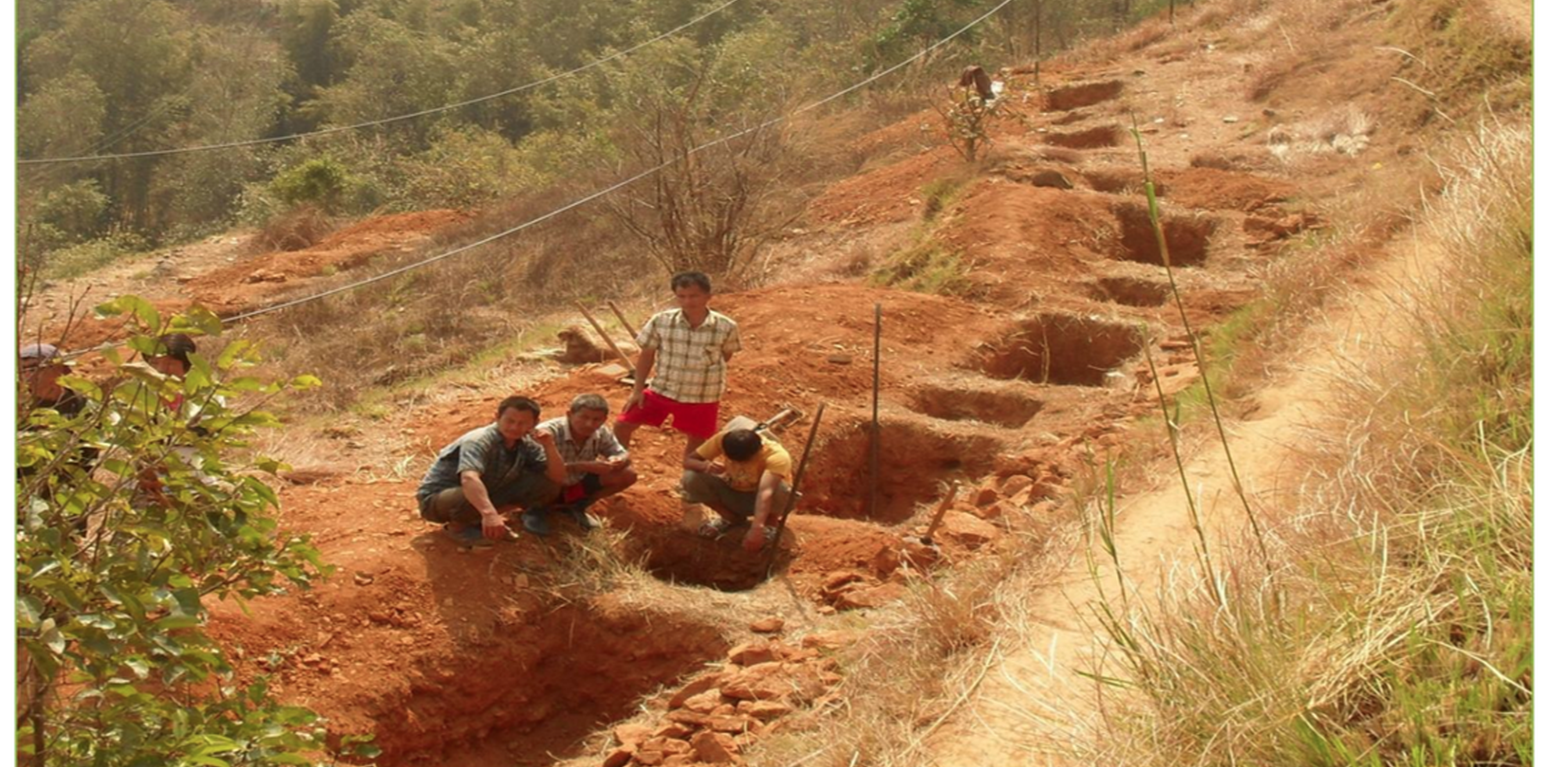



Trenches and check dams play a vital role in the implementation of the springshed revival technology in the picturesque hilly village of Lholing. This innovative approach to rejuvenating springsheds has extended its reach from the lush pasturelands above the village all the way down to the very first household of Lholing, resulting in the construction of approximately 20 ponds of varying sizes, replenished by springsheds. In some instances, the creation and expansion of these springsheds required the utilisation of mechanical excavators, emphasising the magnitude of the project.
The revitalised springsheds now produce an array of springs, each contributing water that eventually converges into a common tributary meandering towards the village. This valuable water is collected and stored in purposefully constructed water harvesting ponds, serving as a reliable source for kitchen garden irrigation and cattle feeding. While the primary objective was to address the pressing issue of drinking water scarcity in the community, it also yielded secondary benefits. These encompassed the provision of a drinking water source for the wildlife inhabiting the area, as well as supporting the irrigation needs of the kitchen garden. The implementation of check dams yielded additional advantages by mitigating rill and gully erosion and serving as effective filters for muddy spring water. This sustainable land management strategy was accomplished through a series of distinct activities. Firstly, an exhaustive survey and assessment of the springshed area was conducted to identify suitable locations for trenches and check dams. This process took into account factors such as the topography of the terrain, the hydrological dynamics, and the composition of the soil. Subsequently, a comprehensive plan and design was developed for the trenches and check dams, including their dimensions, spacing, and alignment. The involvement of experts and stakeholders during this stage ensured that the chosen design was optimal in terms of its effectiveness (Sameul, 2008).
The execution phase involved the excavation and shaping of the trenches according to the design, followed by the construction of check dams. Trenching are required in open areas (where there is no vegetation cover) to trap surface runoff and enhance infiltration. Trenches can be dug along contour lines in a staggered or continuous pattern. However, the size of the trench is determined based on the site conditions. The number of trenches/pits depends on size, annual precipitation and the slope gradient of the recharge area in smaller area. Wedge shaped trenches are recommended for open areas while staggered or continuous trenches are recommended on slopy areas. Trenches are recommended in larger open area, while pits these check dams were specifically devised to retain water and control its flow. As part of gully treatment and to increase water infiltration, check dams are constructed. Typically, walls or barriers were built using locally available materials such as stone, wood, or concrete.
The advantages and benefits derived from this technology are manifold. In addition to the aforementioned advantages associated with springsheds, the implementation of trenches and check dams significantly contributed to the preservation and conservation of the fertile topsoil, preventing its degradation and erosion. The land users in the village expressed contentment with the successful revival of the springsheds, recognising their multifaceted contributions. Furthermore, they were duly impressed by the check dams' efficacy in preventing soil erosion and their ability to filter muddy water, ensuring a reliable and clean water supply (RSPN, 2023).
The creation of the ponds was especially appreciated as they served as a convenient water source for grazing cattle in the nearby jungle. However, despite the numerous benefits, there was a sense of dissatisfaction among many villagers due to the increasing number of wild animals, including wild boar and deer that frequented the ponds to quench their thirst. This unexpected influx of wildlife posed a significant threat to farms located in close proximity to the open springsheds.
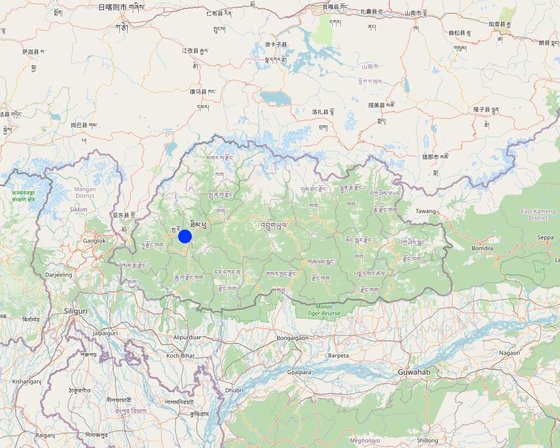
ទីតាំង: Shaba, Lholing., Paro, ប្រទេសប៊ូតង់
ចំនួនទីកន្លែងបច្ចេកទេស ដែលវិភាគ: 10-100 កន្លែង
ការសាយភាយនៃបច្ចេកទេស: អនុវត្តនៅកន្លែងជាក់លាក់មួយ/ ប្រមូលផ្តុំនៅតំបន់តូចៗ
តើស្ថិតក្នុងតំបន់ការពារអចិន្ត្រៃយ៍?: ទេ
កាលបរិច្ឆេទនៃការអនុវត្ត: 2017; តិចជាង 10ឆ្នាំមុន (ថ្មី)
ប្រភេទនៃការណែនាំឱ្យអនុវត្តន៍៖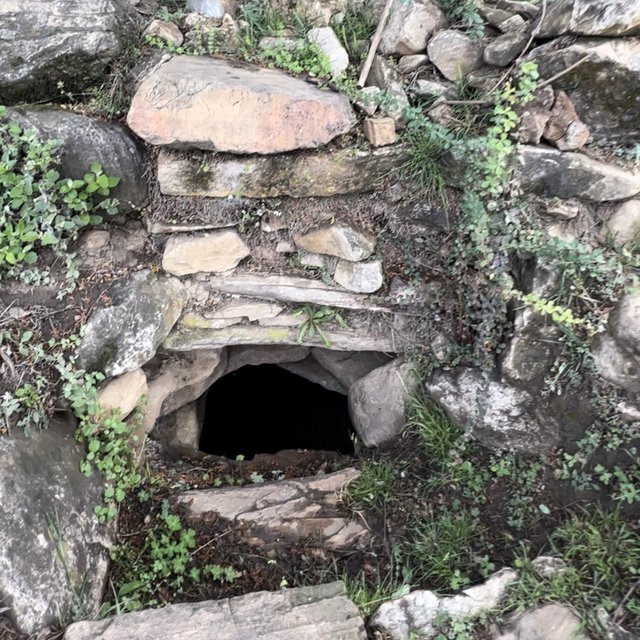
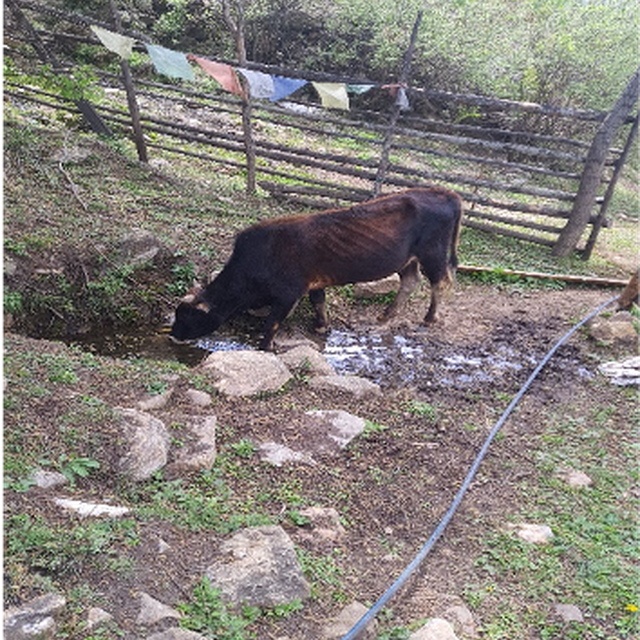


| ប្រភេទពូជ | Count |
| សត្វពាហនៈ - សត្វចិញ្ចឹមយកទឹកដោះ | មិនមាន |
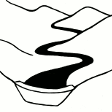



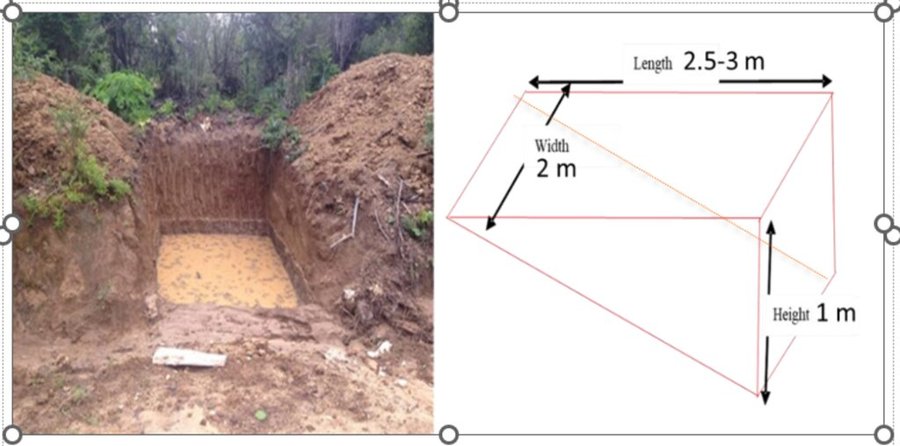
| បញ្ជាក់ពីធាតុចូល | ឯកតា | បរិមាណ | ថ្លៃដើមក្នុងមួយឯកតា (Bhutanese Currency (Ngultrum)) | ថ្លៃធាតុចូលសរុប (Bhutanese Currency (Ngultrum)) | % នៃថ្លៃដើមដែលចំណាយដោយអ្នកប្រើប្រាស់ដី |
| កម្លាំងពលកម្ម | |||||
| labour | person | 22,0 | 700,0 | 15400,0 | |
| Technical Person (Forester) | person | 8,0 | 1500,0 | 12000,0 | |
| សម្ភារៈ | |||||
| Excavator | number | 1,0 | 15000,0 | 15000,0 | |
| Barbed wire | meter | 2,0 | 5500,0 | 11000,0 | |
| Tarpauline sheet | meter | 2,0 | 4200,0 | 8400,0 | |
| សម្ភារៈសាងសង់ | |||||
| Mud | |||||
| Boulders | |||||
| ថ្លៃដើមសរុបក្នុងការបង្កើតបច្ចេកទេស | 61'800.0 | ||||
| ថ្លៃដើមសរុបក្នុងការបង្កើតបច្ចេកទេសគិតជាដុល្លារ | 751.37 | ||||
| បញ្ជាក់ពីធាតុចូល | ឯកតា | បរិមាណ | ថ្លៃដើមក្នុងមួយឯកតា (Bhutanese Currency (Ngultrum)) | ថ្លៃធាតុចូលសរុប (Bhutanese Currency (Ngultrum)) | % នៃថ្លៃដើមដែលចំណាយដោយអ្នកប្រើប្រាស់ដី |
| កម្លាំងពលកម្ម | |||||
| Farmers | person | 22,0 | 100,0 | ||
| សម្ភារៈ | |||||
| spade and shovel | numbers | 10,0 | 100,0 | ||
The farmers of Lholing have to avail services like bank, health, technical assistance and education in Shaba as the households were less to get the government support.
In winter the spring water could be also used for drinking purposes.
This is expert estimates
The water availability drastically increased for the livestock feeding through direct supply from the springshed ponds or spring water collected near the village in water harvesting pond. This is expert estimates
Available Irrigation water for both wetland and kitchen garden are drastically improved with springshed. This is expert estimates
Improved with improved hygiene. This is expert estimates
Reduced water related conflicts. This is expert estimates
This is expert estimates
This is expert estimates
Surface run-off especially during monsoon is drastically reduced with both trenches and check dams.This is expert estimates
The technology has been beneficial for the near by spring revival
The effect wasn't effective when water source was totally dried up during the winter
No effect at all
Checkdams sometimes served as a filtration for the residue and reduces the velocity of flow
No damage has been recorded after an application of the technology